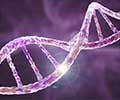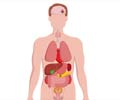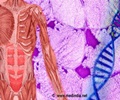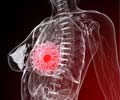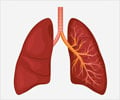Genetic mutation that underlies the vast majority of cases of Waldenstrom's macroglobulinemia (rare form of lymphoma) has been discovered by Dana-Farber Cancer Institute researchers.

The discovery was made by sequencing the genome of tumor cells in Waldenstrom's patients, ¬ reading the cells' DNA letter by letter, ¬ and seeing where it differed from that of the patients' normal cells.
"We found that tumor cells in 90 percent of the patients we tested contained a single point mutation, an error in one of the bases that make up the 'rungs' of the DNA helix," says Steven Treon, MD, PhD, who led the research with his Dana-Farber colleague Zachary Hunter. "In subsequent experiments, when we treated the tumor cells with drugs that target the pathway activated by the mutated gene, the cells underwent apoptosis, or programmed cell death. These results suggest that new, effective treatments that target the tumor cells directly are now possible for people with the disease."
Waldenstrom's macroglobulinemia is a slow-growing form of non-Hodgkin lymphoma that originates in white blood cells known as B lymphocytes. When abnormal B cells begin to multiply out of control, they produce excessive amounts of a protein called monoclonal immunoglobulin, which causes the blood to thicken and flow less smoothly. In some patients, the disease produces no major symptoms; in others, problems can include weakness, fatigue, excessive bleeding, and weight loss. In severe cases, vision and neurological problems can occur. Approximately 2,000 to 3,000 people are diagnosed with Waldenstrom's each year in the United States; it is more common in men than women, more prevalent in people of Ashkenazi (Eastern European Jewish) descent, and arises more often in older people than young.
Although there isn't a cure for Waldenstrom's, treatments include drugs such as rituximab, bortezamib, and bendamustine. High-dose chemotherapy with autologous stem cell transplantation is infrequently also used. Since the disease was first described 70 years ago, all previous efforts to track down a genetic cause have been fruitless, Treon remarks. For the current research, Treon and his colleagues conducted whole genome sequencing of tumor cells and normal cells from 30 patients with Waldenstrom's. In collaboration with Complete Genomics of Mountain View, Calif., researchers "lined up" the sequences of the tumor and non-tumor cells to identify differences. Ninety percent of the tumor cells had a point mutation in the gene MYD88.
"The mutation causes the cells to produce a distorted protein, which switches on the IRAK complex pathway, leading to activation of NF-kB, a protein that is essential for the growth and survival of Waldenstrom's tumor cells," Treon comments. "When we shut down the pathway by blocking the abnormal protein with drug molecules, the tumor cells entered apoptosis." Equally important, the tested molecules had no adverse effect on normal cells.
Advertisement
Source-Eurekalert





